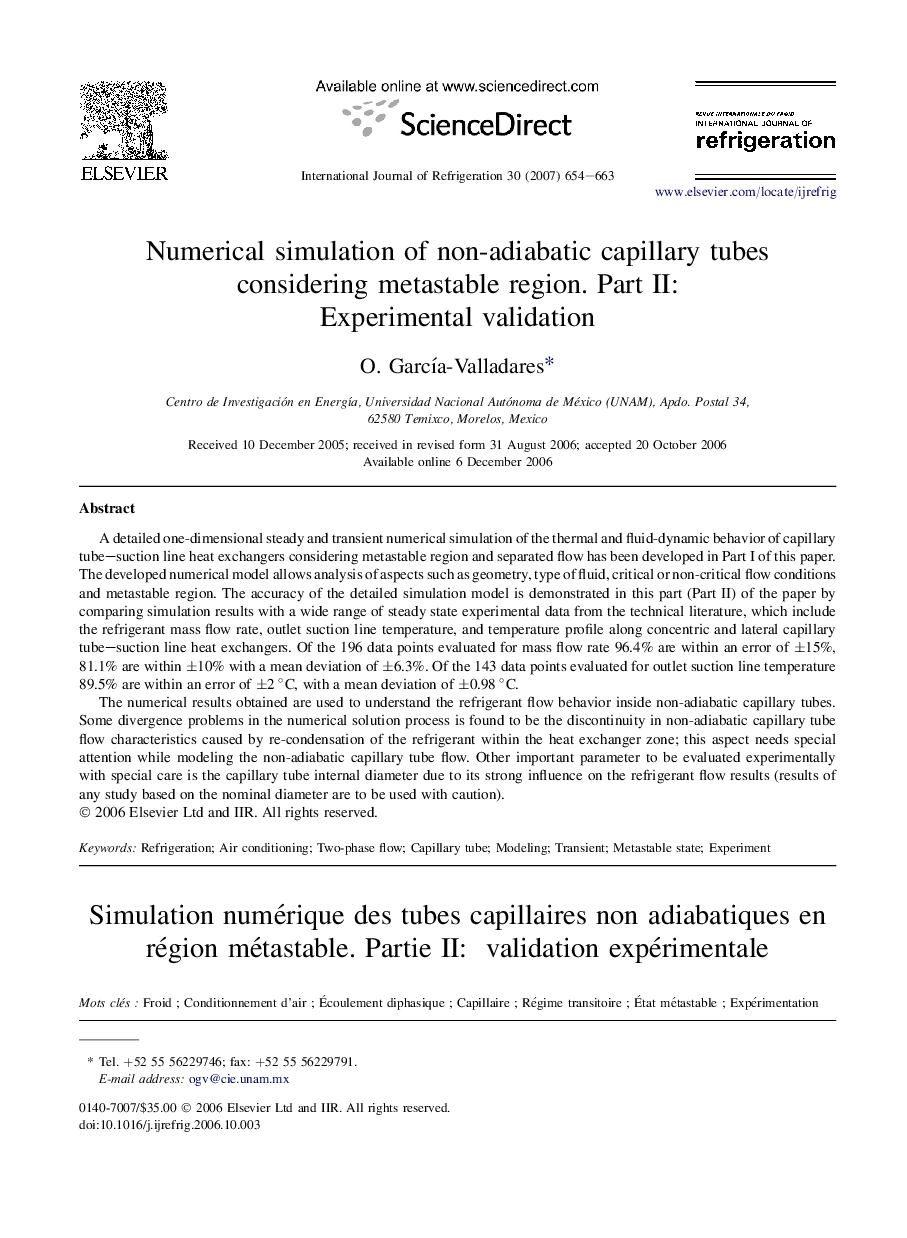| Article ID | Journal | Published Year | Pages | File Type |
|---|---|---|---|---|
| 790648 | International Journal of Refrigeration | 2007 | 10 Pages |
A detailed one-dimensional steady and transient numerical simulation of the thermal and fluid-dynamic behavior of capillary tube–suction line heat exchangers considering metastable region and separated flow has been developed in Part I of this paper. The developed numerical model allows analysis of aspects such as geometry, type of fluid, critical or non-critical flow conditions and metastable region. The accuracy of the detailed simulation model is demonstrated in this part (Part II) of the paper by comparing simulation results with a wide range of steady state experimental data from the technical literature, which include the refrigerant mass flow rate, outlet suction line temperature, and temperature profile along concentric and lateral capillary tube–suction line heat exchangers. Of the 196 data points evaluated for mass flow rate 96.4% are within an error of ±15%, 81.1% are within ±10% with a mean deviation of ±6.3%. Of the 143 data points evaluated for outlet suction line temperature 89.5% are within an error of ±2 °C, with a mean deviation of ±0.98 °C.The numerical results obtained are used to understand the refrigerant flow behavior inside non-adiabatic capillary tubes. Some divergence problems in the numerical solution process is found to be the discontinuity in non-adiabatic capillary tube flow characteristics caused by re-condensation of the refrigerant within the heat exchanger zone; this aspect needs special attention while modeling the non-adiabatic capillary tube flow. Other important parameter to be evaluated experimentally with special care is the capillary tube internal diameter due to its strong influence on the refrigerant flow results (results of any study based on the nominal diameter are to be used with caution).
